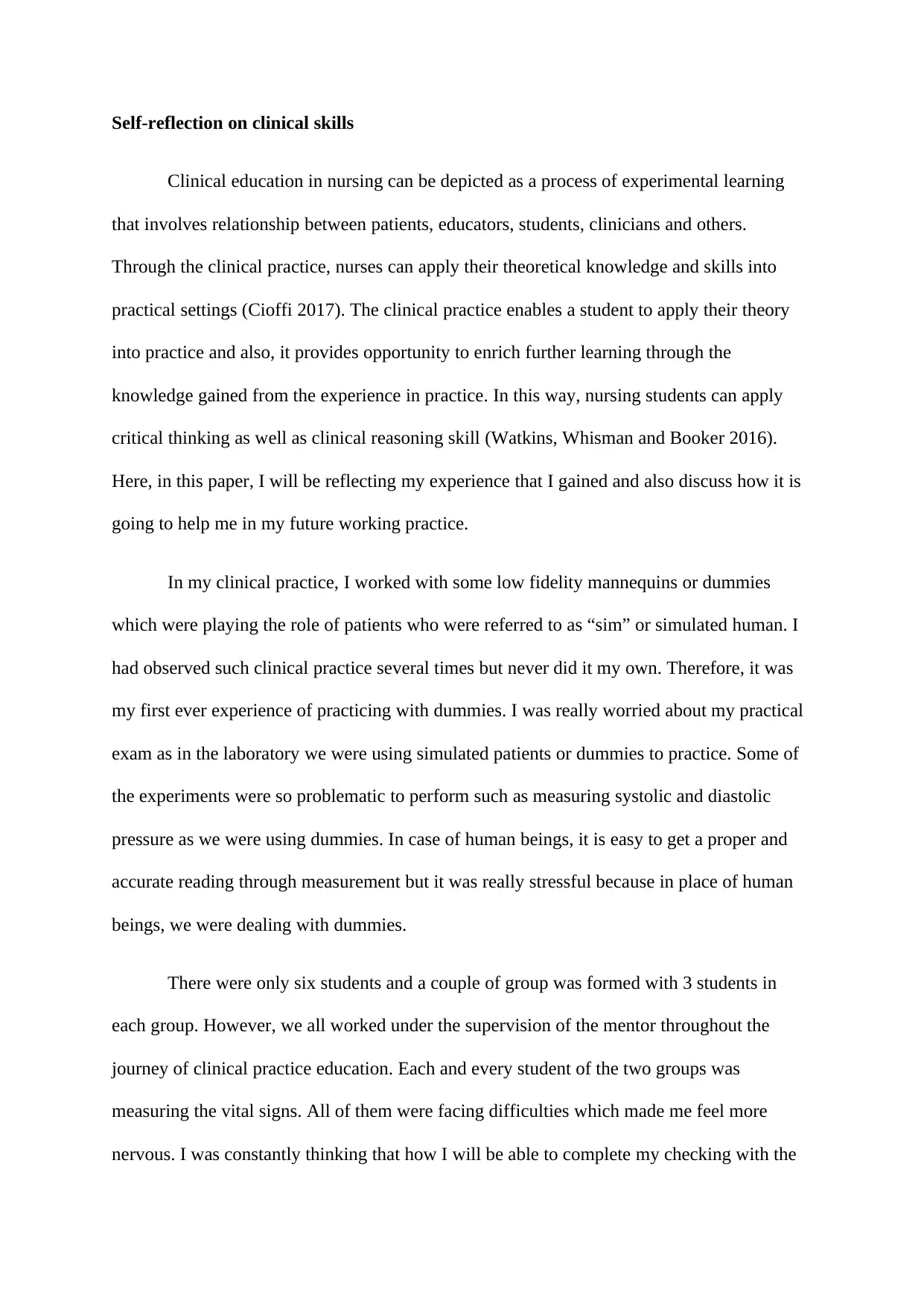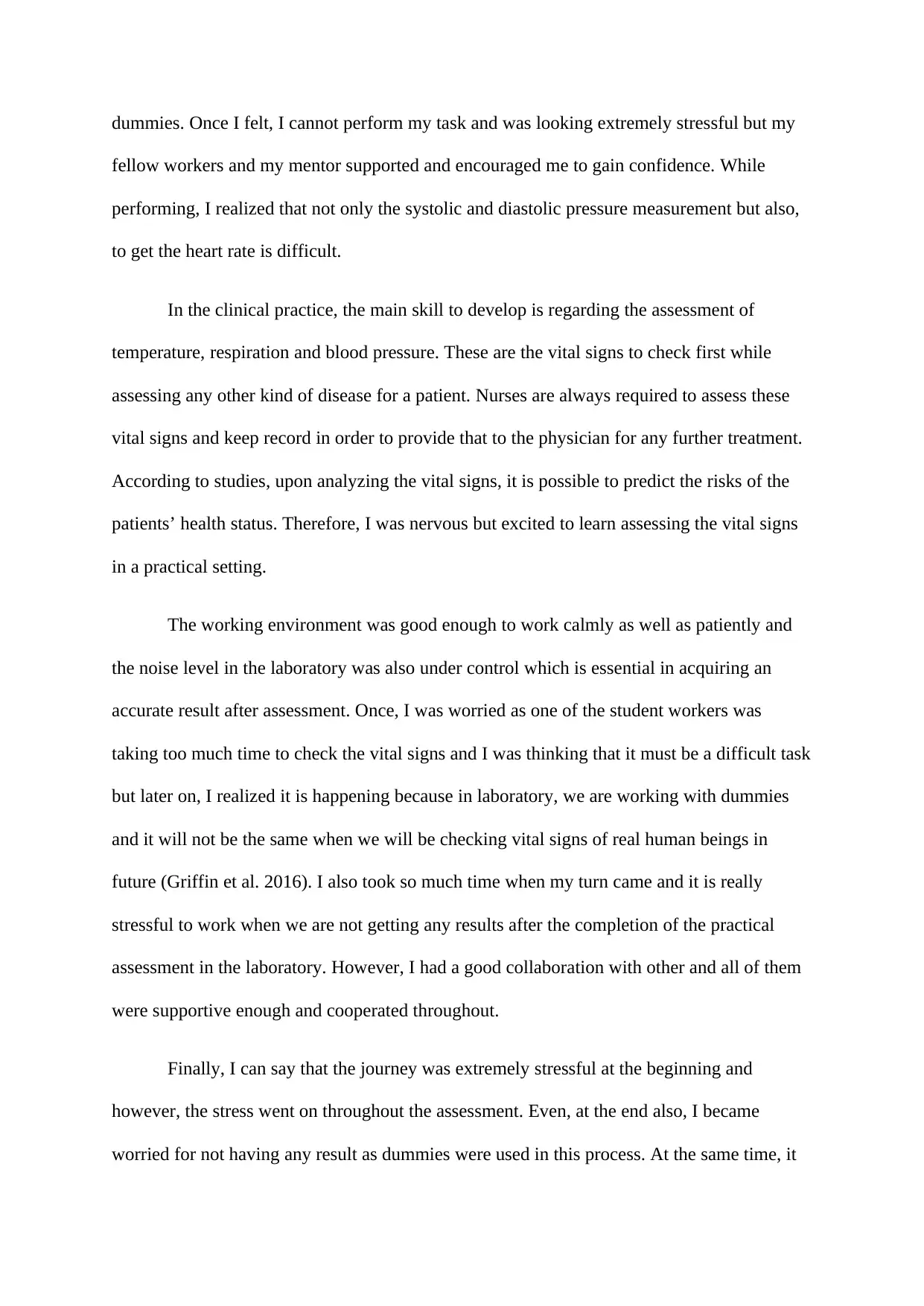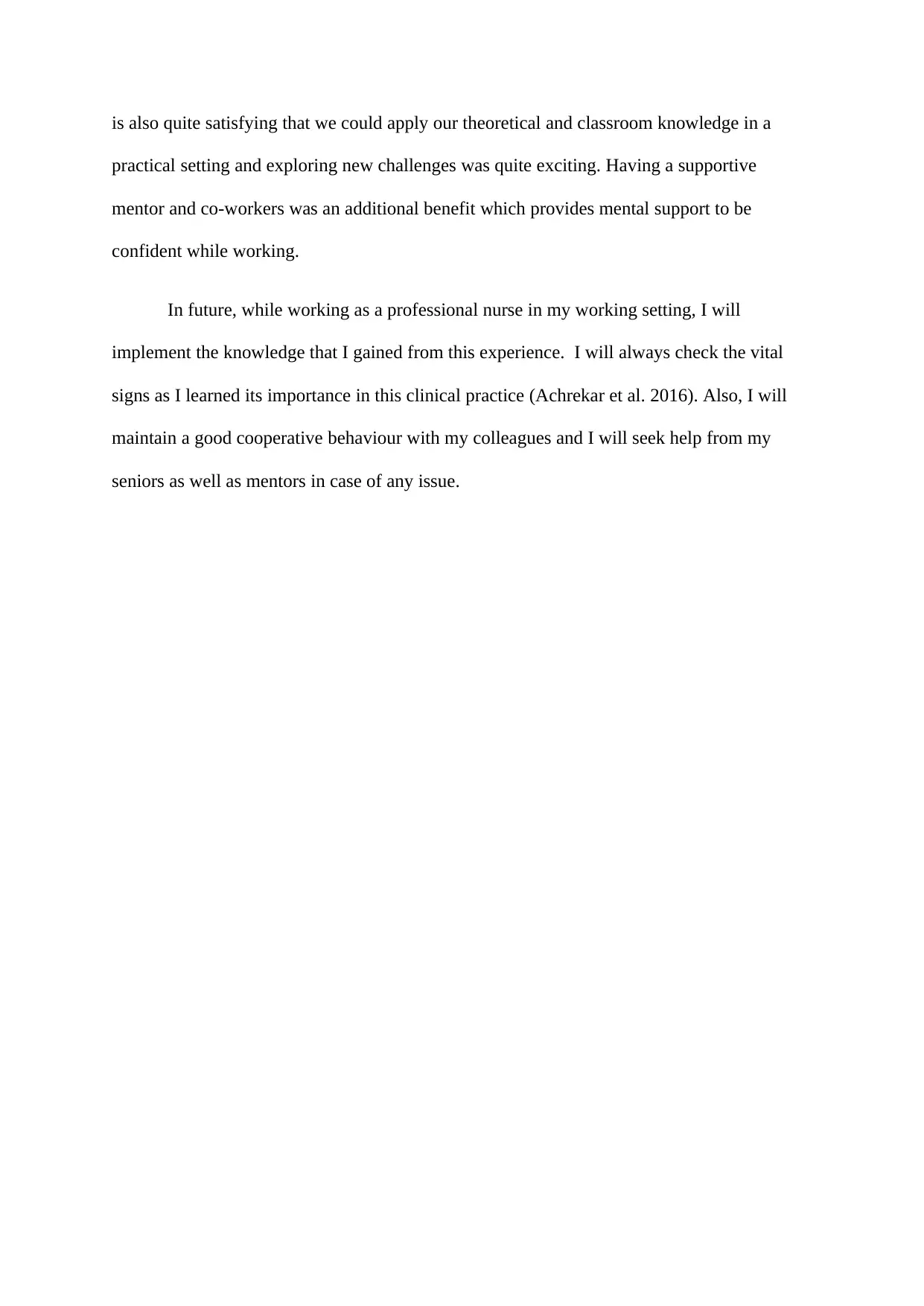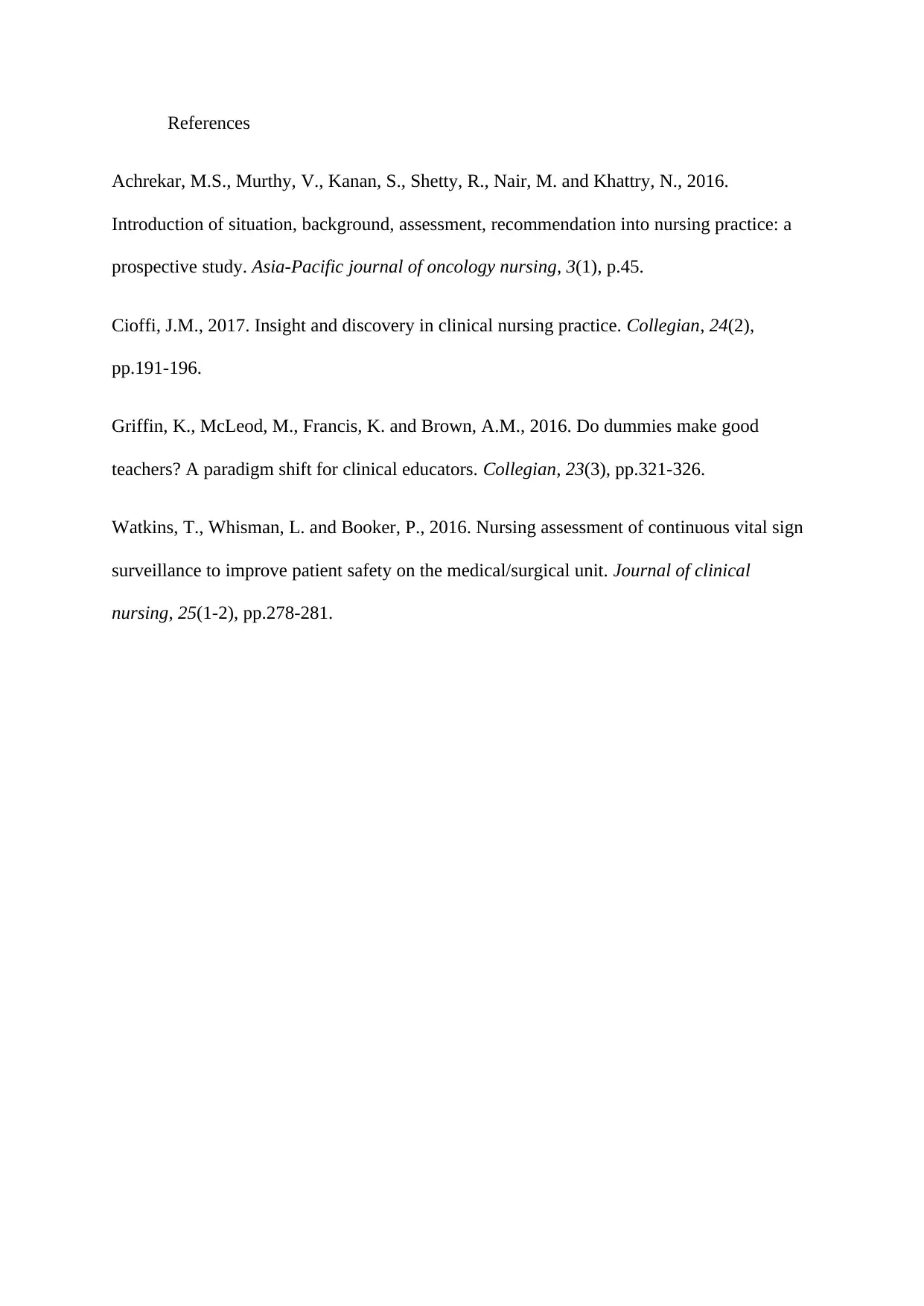Nursing Clinical Skills: Self-Reflection on Vital Signs Assessment
VerifiedAdded on 2023/04/04
|4
|892
|202
Journal and Reflective Writing
AI Summary
This paper reflects on a nursing student's experience with clinical skills, specifically vital signs assessment using simulated patients. The student describes initial anxieties and challenges encountered while practicing systolic and diastolic pressure measurements, heart rate monitoring, temperature checks, and respiration assessments. Despite the stress of working with dummies and the initial difficulty in obtaining accurate readings, the student highlights the importance of vital signs in predicting patient health risks. The experience fostered collaboration, highlighted the value of supportive mentors and colleagues, and reinforced the application of theoretical knowledge in a practical setting. The student concludes by emphasizing the intent to implement learned skills and maintain cooperative relationships in future professional nursing practice, seeking guidance from seniors and mentors when needed. Desklib offers a wide array of resources including past papers and solved assignments for students seeking to improve their understanding of similar topics.
1 out of 4











![[object Object]](/_next/static/media/star-bottom.7253800d.svg)